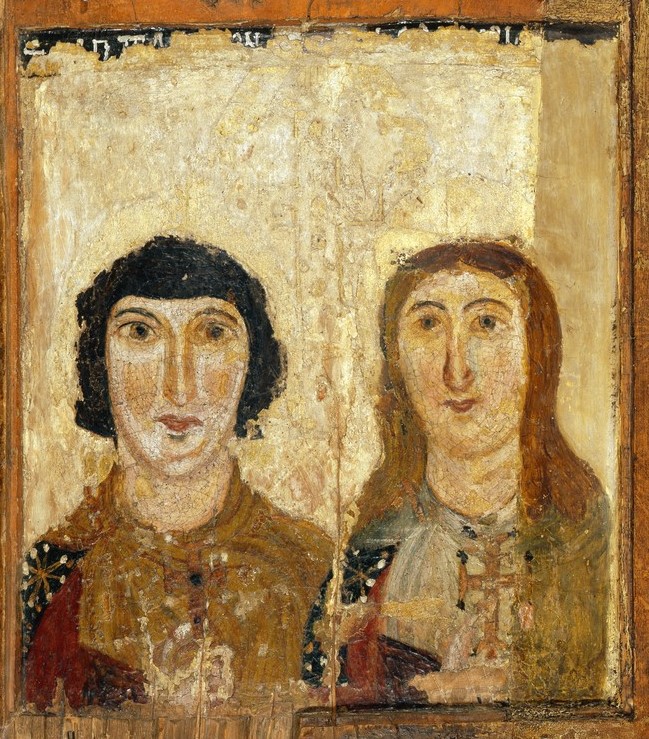
Author:
Unknown
Name:
A Male Martyr (Plato?) and a Female Martyr (Glyceria?)
Creation time:
7th century
Place of origin:
Sinai (?)
Material:
cold encaustic on lime
Size:
54.2х48.6 cm
Inventory #:
114 ЖК
Section:
Icon paintings
Description
In the icon on both sides of the large Golgotha cross are depicted two saints: a man and a woman holding smaller crosses, which are the symbols of their martyrdom. It is how according to a similar iconographic formula, derived from the ancient family portrait, paired images of saints were painted in the early days of Christianity.
The Greek inscription with the names of the martyrs at the top of the icon is only partially preserved, so the names of the saints have not yet been definitively established. The left part of the inscription most likely reads as “St. Plato”, therefore the martyr is considered to be Saint Plato of Ancyra, who is renowned for the miracles he performed at Sinai. In the local Sinai calendar, St. Plato’s Remembrance Day (May 13) is the same as St. Glyceria’s of Trayanopolis. Since the right part of the inscription does not contradict the reading of “Glyceria”, it is probable that this exact pair of saints is depicted on the icon. According to this iconographic interpretation, the icon, painted in a less perfect manner than the other three images of the Kyiv collection, belongs to the local Sinai school.
The background of the icon, now almost lost, was originally gold. The remains of the polychrome painting allow to observe above the heads of the martyrs the image of the “all-seeing eye” with three rays, which is a symbol of God’s presence. On the central cross an ornament imitating precious stones has partially remained. All areas where there is a significant paint loss, including images of hands and eyes, have signs of mechanical damage. This may indicate an ancient way of “using” the icon: under the influence of popular magical ideas, there was a tradition to use the paint and levkas scraped from the icon as medicine.
The right side of the board with a fragment of the martyr’s image is lost and replaced with a new one. The figure on it is partly painted with oil paints. The recesses in the frame, intended for the lid, indicate that the icon was portable. Thus, it was taken to pray in a trip or transported from the monastery to hermitages.